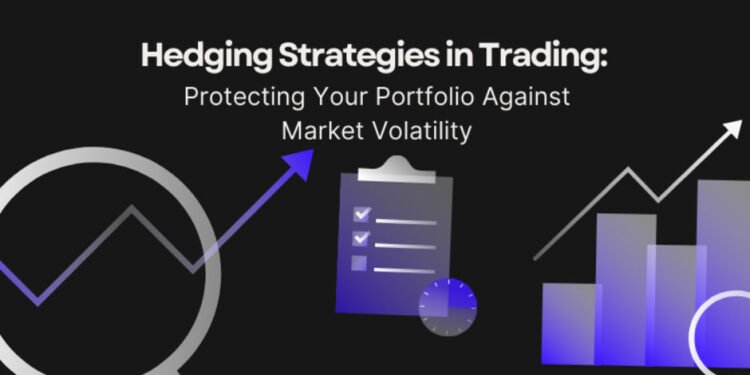The financial markets are constantly changing, which offers investors both opportunities and risks. Volatility can lead to significant losses, especially during times of economic instability or uncertainty. To protect their capital, many traders and investors use hedging strategies—risk minimization methods that reduce the impact of market fluctuations.
In this article, we will focus on the main hedging strategies and technical analysis techniques, including divergence, to predict potential market reversals. This knowledge will help you to protect your assets and find new trading opportunities.
How To Protect Your Portfolio?
One of the key methods of capital protection is hedging – a strategy that allows traders to minimize the risks associated with price changes in assets.
Imagine you invested $10,000 in Ethereum (ETH), expecting it to grow. However, the crypto market is known for its high volatility, and there is always a risk of a sharp price drop. To protect your capital, you decide to apply a hedging strategy.
You buy a put option on ETH with a strike price of $2,800, paying a premium of $200. If the market rises and the cost of ETH increases, your underlying asset continues to make money, and the option expires with no loss other than the premium you paid.
But if the price of Ethereum suddenly drops to $2,500, your portfolio would lose about $1,000 without hedging. However, thanks to the put option you bought, you can sell ETH at the fixed price of $2,800, thereby offsetting the loss.
In this way, hedging in cryptocurrency acts as financial insurance: you pay a small amount to protect capital, reducing risks in conditions of high market uncertainty.
Hedging Strategies
Options
Options provide traders with a risk management strategy. Traders establish price points where they can buy or sell an asset, providing protection against potential losses in volatile markets.
Futures Contracts
Through futures contracts, traders can secure the price of an asset set for the future, allowing them to protect themselves from devastating price movements and possible risks.
Put Options
Traders can use put options as a hedging tool to protect their long positions. This allows them to sell an asset at a predetermined price, minimizing losses if the market falls.
Call Options
Call options allow traders to hedge short positions by giving them the right to buy an asset at a set price within a specified time period. This reduces potential losses when market conditions change.
Long Futures
Taking long positions in futures contracts allows traders to hedge against falling prices, potentially offsetting losses in their cryptocurrency investments.
Hedging Step by Step
Step 1: Defining the base position
You have an existing position in a particular asset, e.g. SOL or ETH. You either own the cryptocurrency or have access to its prices.
Step 2: Identify the risks
The next step is to identify the risks associated with the underlying position. For example, the risk of owning USDT may be that the price falls.
Step 3: Take an offsetting position
You can hedge the risk by opening a position in a relevant instrument likely to move in the opposite direction of the identified risk.
Hedging is a powerful tool for protecting capital, but its effectiveness increases by using technical analysis. One of the key indicators that can warn of potential market reversals and the timely need for hedging is divergence.
Technical analysis is a part of knowledge used to anticipate the price movement of assets using numerous charts and indicators. Among the most common tools is the relative strength index (RSI), which traders use to determine if an asset is overbought or oversold, as well as to identify trend reversals.
RSI divergence occurs when the price of an asset moves in one direction, while the RSI indicator moves in another:
- A bullish divergence occurs when the price makes a higher low, and the RSI makes a higher low, indicating that the downtrend is weakening.
- A bearish divergence, on the other hand, comes when the price achieves a higher high, which is accompanied by a lower high in the RSI, which may predict a downward reversal.
There are three types of RSI divergence, and understanding them is important to successfully using this analysis tool:
- Type 1 (classic divergence): divergences are obvious and easily detected on the chart. This signal is considered reliable.
- Type 2 (less obvious divergence): RSI extremes are at different levels, but price extremes are closer.
- Type 3 (Hidden Divergence): The divergences are less visible, but the key difference with Type B is that the price extremes are at different levels, while the RSI extremes are close.
Save Your Portfolio from Market Volatility
Develop a hedging strategy
- Determine the acceptable level of risk.
- Choose the appropriate instruments – options, futures, or swaps.
Follow technical indicators
- Use bearish divergence as a warning signal of a possible market reversal.
Diversify your assets
- Invest across asset classes to reduce exposure to market volatility.
Adapt your strategy to changing conditions
- Markets are volatile, so review your hedging strategy periodically.
Hedging is more than just a method of protecting a portfolio—it’s a comprehensive system of risk management. Using options, futures, and swaps helps reduce market fluctuation impacts while analyzing bearish divergence helps predict trend reversals and adapt strategies accordingly.
Traders and investors who combine fundamental analysis, technical indicators, and hedging tools gain a market advantage and can better protect their assets during highly volatile periods.












